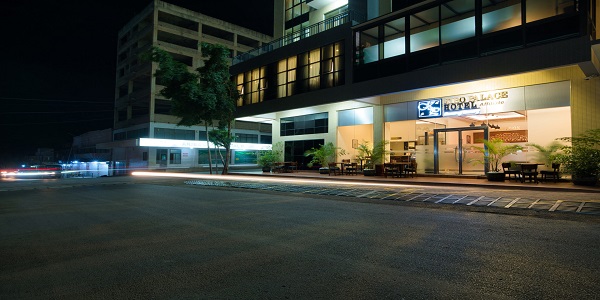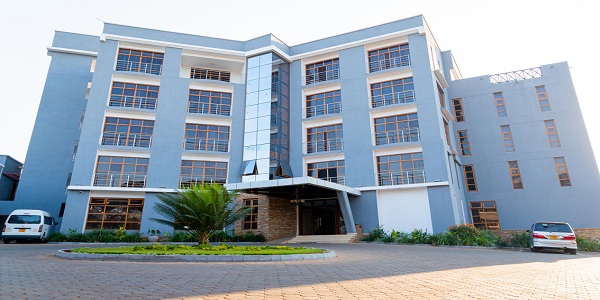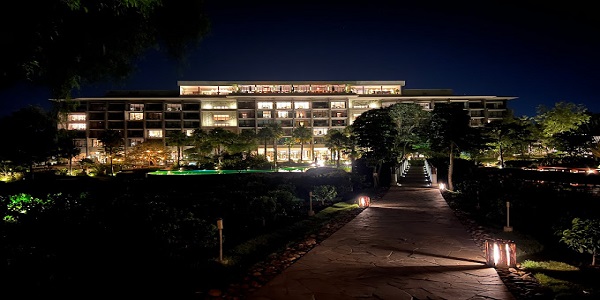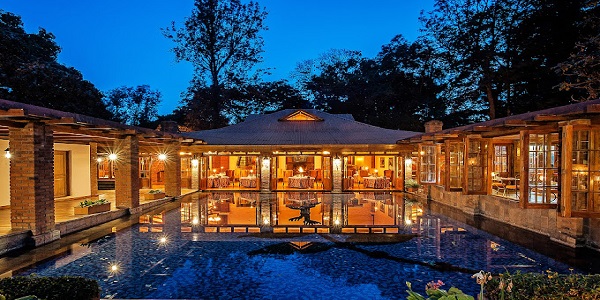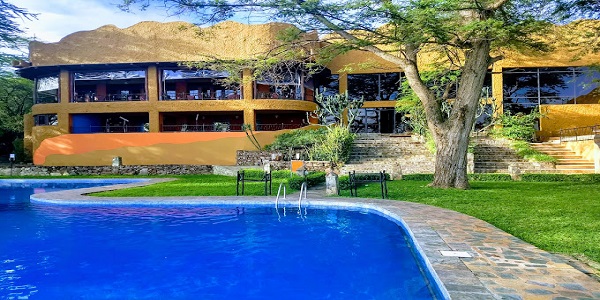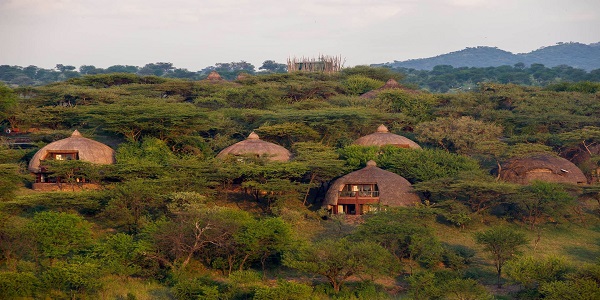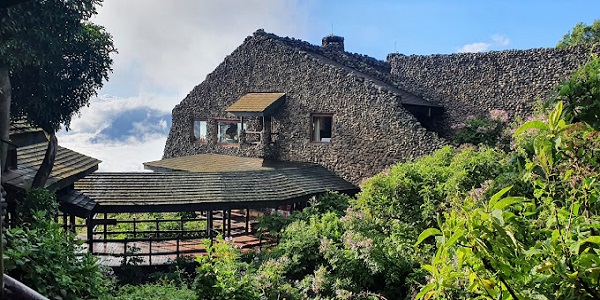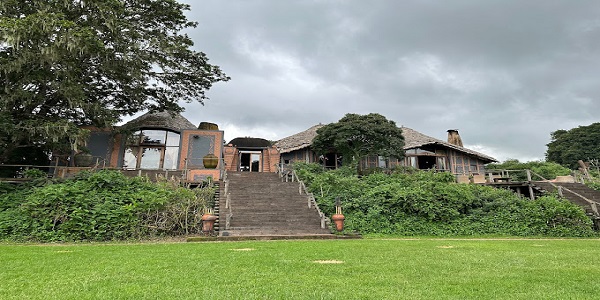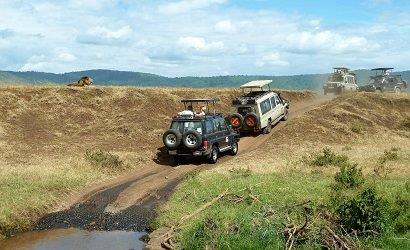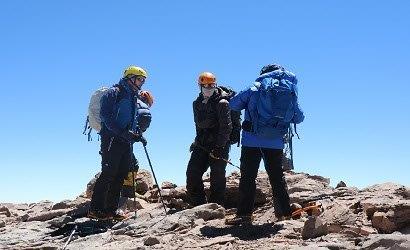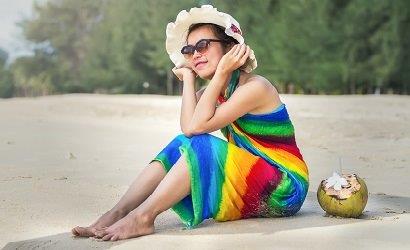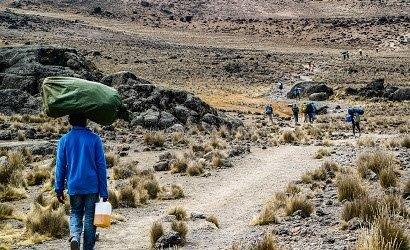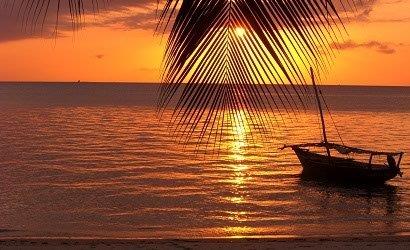3 DAYS TANZANIA LUXURY LODGE SAFARI (SERENGETI NATIONAL PARK -NGORONGORO)
A combined safari to Serengeti and Ngorongoro Crater allows you to see the diverse topography and wildlife that East Africa offers. Make your way from Arusha through the adventurous roads of the hollowed-out Ngorongoro Crater, to Serengeti while seeing animals, birds, and reptiles along the way.
You will come close to the Maasai culture as you will pass by one of their bomas have a time to see the huts try their garments and experience the culture.
DAY O - Arrival - Kilimanjaro
Once you have arrived safely at Kilimanjaro airport you will be met by one of our friendly driver who will transfer to your Hoten in Moshi or Arusha city. Should you arrive early you can explore the small town of Moshi or Arusha City, which is only a short taxi ride away, or you can just relax at the lodge and get ready for the days ahead. You will also meet with one of our operations staff and Guide who will explain everything you need to know regarding your safari
- ACCOMMODATION: (OPTIONAL)
Day 1: Serengeti National Park
>>> After breakfast we head towards the Serengeti National Park, via the beautiful high lying farmland of Karatu and the Ngorongoro Conservation Area. Leaving the highlands behind, we descend into the heart of wild Africa; the Serengeti National Park with its endless plains, rolling into the distance as far as the eye can see. We head to the central park area, known as the Seronera area, one of the richest wildlife habitats in the park, featuring the Seronera River, which provides a valuable water source to this area and therefore attracts wildlife well representative of most of the Serengeti’s species.
We arrive in time for lunch and enjoy an afternoon game drive in the Serengeti National Park. Dinner and overnight at a camp.- Accommodation: (OPTIONAL)
Days 2: Serengeti National Park
After breakfast you will do a game drive in Serengeti National Park With your lunch box following the animal Migration at the Northern Serengeti where the migration will be, you will be able to see wildebeest, zebra, a topi hartebeest, eland, antelope, hyena, varieties of birds singing on the trees also viewing beauty of landscape and nature,After having your lunch You will continue with game view in Serengeti heading to the gate of Serengeti to check out of Serengeti National Park, after there you will proceed with game on route heading to ngorongoro Crater.
- Accommodation: (OPTIONAL)
Days 3: Ngorongoro Crater
>>> After breakfast, descend into the crater with lunch box enjoying the game drive for more than six hours. The Ngorongoro Crater is one of the most densely crowded African wildlife areas in the world and is home to an estimated 30,000 animals including some of Tanzania’s last remaining black rhino.
Supported by a year round water supply and fodder, the crater supports a vast variety of animals, which include herds of wildebeest, zebra, buffalo, eland, warthog, hippo, and giant African elephants. Another big draw card to this picturesque national park is its huge population of predators, which include lions, hyenas, jackals, cheetahs and the ever-elusive leopard crater floor. After a picnic lunch you will have a game drive there after in the late afternoon you will drive back to Arusha Town.- Accommodation: (OPTIONAL)
The Trip Cost Includes
- 4x4 Safari Car
- Park fees
- All activities (unless labeled as optional
- All accommodation as stated in the itinerary
- All transportation (unless labeled as optional)
- All Taxes/VAT
- All Meals (as specified in the day-by-day section)
- Drinking water on all days
The Trip Cost Excludes
- Flights
- Additional Park fees
- Tipping the crew
- Visas
Frequently asked Questions
Mount Kilimanjaro can be climbed anytime throughout the year. Most travellers prefer climbing during the dry seasons: December to March, June to October. Many consider the best months to climb Kilimanjaro to be January, February and September.
Your Kilimanjaro dream climb is entirely your own to design. Uhuru Trails will work with you to customize exactly the triumphant Tanzanian mountainous quest experience you want. You go with the people you choose. You leave on whatever day you wish. You decide on your preferred route option, pace and the number of days you will take, with detours to villages, forest, geological features, or whatever attracts you to the mountain, be it flora, panoramic landscapes, glaciers or climbing challenges. You can plan additional rest days for acclimatization so that you can actually enjoy your unique Kilimanjaro vacation rather a rat race to reach the summit, or even make a trip to Crater Camp to give you a head start on sunrise from Uhuru Point. Your Tanzanian mountain holiday at Kilimanjaro is the opportunity of a lifetime. You deserve the best possible planning and support to make it a treasured memory you will share with delight. Leaving on your preferred day you please means you can avoid crowding especially on weekend arrivals and start dates. Many tour operators have set times and itineraries for standard routes which means that on some days there are hundreds of trekkers congesting narrow bottleneck trails and spoiling the wilderness experience for each other. Setting out at staggered times on varied routes makes your trekking tour of Mt. Kilimanjaro a more private and personalized experience, affording you the prospect of enjoying the landscape at its most authentic.
Choosing your own route and trail variations means that you can traverse the zones of greatest interest to you without being constrained by a one-size-fits-all standardization that tries to please everyone, but actually results in universal frustration when trekkers who prefer to amble in isolation have to scramble to keep up with those who want to summit as fast as possible, whilst fitter people who prefer the exhilarating alpine slopes are forced to dawdle through cultivated foothills to give less well-prepared stranger companions the chance to acclimatize. There is no need for sufferers from vertigo to steel themselves to ascend the steep Barranco Wall when they can choose to enter from the north following the less used Rongai route, adding extra days to ensure full acclimatization and the best possible odds for a pleasant and successful summit achievement. On an Uhuru Trails Kilimanjaro trip, each climber has his own personal support guide, which means there is less pressure to stay in a tight formation as long as they don’t lose sight of each other. This enables hikers to take note of a bird, a plant or a mountain feature of especial interest and discuss it with a knowledgeable companion without holding up the entire group.
An overnight stop at Crater Camp is an optional extra on any customized Kilimanjaro climb with Uhuru Trails usually lasting eight actual mountain days or more on the Shira, Lemosho, Umbwe and Machame routes. Possibly the most bizarre place you will ever see, it is visited by less than 5% of the 40,000 to 50,000 people who annually ascent Kilimanjaro on a distinct highlands voyage in northern Tanzania. Although, it is an unforgettable experience for anyone who is highly fit, determined and very well-acclimatized, if you do not match this description, forget it. It is the main boarding platform for the “Kilimanjaro Express”, the one-wheeled all-terrain stretcher used for speedy evacuation of sufferers from HAPE, HACE, hypothermia and other varieties of the dreaded Acute Mountain Sickness (AMS) which affects most people to some degree at this altitude and actually kills 0.1% trekkers and porters each year on Africa’s shining mountain, many of whom took inadequate precautions for their challenging Mount Kilimanjaro trek, or overestimated their capabilities and spent too long at high altitude, often at Crater Camp. But if you are well-prepared and backed up by very experienced guides: if you are warmly clothed and housed in strong, warm tents during a restless, uncomfortable night; the headache you will inevitably suffer will be repaid a hundredfold by the experience of a mind-changing, utterly alien landscape, totally unexpected on an African mountain tour.
But still, he has managed to despoil this awe-inspiring environment with human detritus. You walk without thought, struggling to breathe on this ultimate Mt. Kilimanjaro challenge, and some operators take the easiest option. They leave their litter behind. Summit first, at Uhuru Peak, 5895 meters (19,340 feet), then descend to the floor of Kibo crater for your overnight camp, at 5640 meters (18,750 feet) making the most of the altitude differential to sleep lower than you hiked. The next morning a short scramble to the rim gives you peerless sunrise views of rocky islands floating in the clouds, and a distant, pitiful file of climbers completing their predawn struggle to the peak which you now occupy alone. Do not linger long before descending to more hospitable zones, buoyed up, despite your physical depletion, by the marvels you have seen and the trekking success on Kilimanjaro you have achieved, over the majestic mountain, and over yourself.
An escapade safari vacation in Tanzania has many possibilities, from the strenuous and challenging climbing adventure on Kilimanjaro to the raw, bloody wilderness of Katavi, heaving with hippo and crocodiles competing frenziedly for places in shrinking mud wallows. The first is both mentally and emotionally demanding. The second involves you as a spectator in primordial violence. Fly to Saadani, on the coast of the Indian Ocean, which offers tropical forest, mangrove swamps and beach-side idylls, or visit the enormous Selous Game Reserve crossed by the mighty Rufiji River, which is a place of awesome beauty and a paradise for bird watchers. As a spectator on safari in Africa, you can view the mass foaling of hundreds of thousands of wildebeest on the northern parks circuit in the Ndutu wilderness or oversee the epic migration of thousands of zebra and over a million wildebeest across the Serengeti plains. Game drives through the diverse parks and Ngorongoro Crater will give you opportunities to see an abundant variety of game including lion, leopard, buffalo, elephant and many rare and beautiful antelopes. Threatened wild dogs and even endangered black rhinoceros can be seen, together with iconic giraffe and endearingly obnoxious warthogs. You could continue your Tanzanian adventure theme by fly-camping in unspoiled bush or imitating the luxurious safari style of the colonialists and explorers with every period embellishment. For added variety, canoeing, snorkeling, diving, fishing, bird-watching, horse-riding, biking, walking, sailing and even hot-air ballooning are all on offer somewhere in this vast and varied country. As a complete change, you could enjoy a cosmopolitan holiday in the city of Dar es Salaam, or a barefoot getaway to the lake beaches of Tanganyika. Get close to the chimpanzees of Gombe and Mahale, or visit historic sites such as Olduvai Gorge where man’s ancestors walked over two million years ago.
Enjoy the hospitality, culture and fun of the indigenous people, or involve yourself in conservation, research and development initiatives. There is such a diverse range of possibilities for a fascinate safari in all Polar Regions of Tanzania. Having pitted yourself against Africa’s greatest mountain, you deserve your reward extended and seamless Tanzanian adventure tours that will embrace the preparation and acclimatization of your Kilimanjaro climbing challenge and relaxation afterwards at spectacular venues, at a price to suit your budget. From supreme sybaritic luxury to comfortable value accommodation, Safari Tier 1 opulence and service in the highest tradition of international hospitality encompasses private villas, hideaway lodges, uniquely quirky tree-houses, chateaux and Hemingway style wilderness camps with superlative guides, location, sumptuous meals and more.
Each day you will repack your two bags, taking only what you will need to trek on Kilimanjaro between one camp and the next as well as your water bottles and such things as energy snacks in a small or medium sized backpack. The rest go in the duffle bag for your personal porter, carefully sorted into waterproof plastic bags. Keep your documents, passport and wallet with you at all times. You are carrying water to avoid dehydration. To climb Kilimanjaro mountain, you need about five liters each day. An insulated Camelbak tubed bladder is best, or keep a tubed plastic water bottle handy at the side of your pack to sip as you go. Uhuru Trails by AfricanMecca warns that you must constantly drink to avoid altitude sickness. In freezing conditions, water can solidify in the tube, but if warm water is used to fill the insulated water bladder it will remain liquid if you sip frequently and blow gently down the tube after you have finished. Waterproofs, spare socks and suitable spare clothing for the climate zone go with you, as well as lip balm, snacks, wipes, hat, watch, sunglasses and camera.
What you need to carry on your Kilimanjaro challenge will differ from day to day, so take note of evening briefings about terrain and weather to allow you to pack whatever will be most useful the next day. On the lower slopes, you will need to keep cool and dry on your Mt. Kilimanjaro hiking trip, with short sleeved shirt, insect repellent, short trousers and wide-brimmed sun hat. In heathland and arctic alpine zones, you need protection from the sun with long-sleeved shirts and long trousers. There are useful convertible pants which unzip to be either short or long. A warm fleece would serve on cool mornings. On higher slopes, you need to combat freezing winds, with insulated jacket and ski trousers or thermal under layers. You may want sweets or gum to keep your mouth moist. Menthol pastilles may help breathing. A map, guidebook and compass could be useful, as could a whistle and a small pair of lightweight binoculars. Just beware of metal at altitude: it can stick to your skin with freeze-burn. In warm and temperate zones while trekking during the day, a small trowel and toilet paper solve hygiene problems, but in permafrost areas, waste does not degrade so must be taken away in doggie poop bags to merit a clean ecological conscience.
In your mountain trekking tariff, you have paid for your guides a day in wages, depending on their experience and level of responsibility. Your porters have received equally received remuneration for their incredible feats in transporting your tents, chairs, tables, cooking equipment, food, water, safety equipment and Portales, through dangerous and inhospitable terrain. You would also find some poor and cheap mountain operators, some even well-know, and often underpay their staff, making them humiliatingly dependent on gifts of equipment and tips from clients. Recommend tipping your support staff at approved rates in appreciation of the risks and hardships they have endured to promote your security, convenience and enjoyment of your Kilimanjaro climbing quest, and for the encouragement, knowledge and heart-lifting entertainment they have provided en-route. This is not parsimony on our part, as you would be charged more if they were paid higher wages direct. Tipping maintains the status of Uhuru Trails Mountain Staff in competition with staff of other outfitters. It is a cultural concession which increases the dignity and self-esteem of your support team if they receive a token of your direct personal appreciation of their devoted care. Tips are not dependent on achieving Uhuru Peak, nor even Gilmore Point, but are determined by your opinion of their care, expertise and value in looking after you on your Kilimanjaro trekking trip. Tipping is performed in a kind of ceremonial ritual on return to your Moshi accommodation at the completion of your climb as a gift from the group presented to each individual separately, rather than to the leader, although you may wish to make an extra gift of money or ever welcome superfluous equipment as a personal mark of gratitude for some special victorious enhancement of your Kilimanjaro challenge experience.
Tips are collected by an assigned group member and allocated for separate presentation to each support group member when all are assembled for a special farewell gathering. It is most important to your team as a fitting ending to a hazardous shared Tanzanian adventure on Kilimanjaro, and a special mark of their individual worth which they can present to their families as proof of the value placed on their service and the risks they have taken on your behalf.
The day begins early on a trek on Kilimanjaro in northern Tanzania. Around 0600 hours, your personal porter/waiter will bring you hot water in a bowl for your morning wash before cooked breakfast is served in the mess tent. This is the best time for photos of spectacular views while the weather starts to clear and the skies lighten. Later, it may become cloudy or misty. By 0730 hours or a bit later, you will be on the trail while porters stay to pack up camp. Experienced hill walkers may find the initial pace vexing because of the need for acclimatization on this steep stand-alone mountain with no foothill approach range. A climbing tour of the majestic Kilimanjaro mountain calls for a special mind-set: allowing plenty of time, enjoying a gentle stroll for between four and seven hours each day, where scenery changes spectacularly between zone only a few hours apart, and much of the flora can be found nowhere else on earth. Your personal guide has time to explain what you are seeing. A packed lunch is taken on route. You will carry your own water with a sipping tube to hydrate you while you walk.
The porters will do everything possible to ensure your enjoyment and success on your Mt. Kilimanjaro trekking vacation, carrying all you do not need during the day, going ahead to set up camp and prepare an evening meal and greeting your arrival with a song. Hot water to wash and hot drinks with snacks appear before a cooked evening meal. Most days, there will be ample time to explore around the camp. Sunset arrives after 1815 hours and has a variation 30 minutes forward on the equator depending on the month, and temperatures drop fast at altitude, so you will not want to spend too long gazing at the breathtaking stars cape.
A strong pair of supportive, waterproof hiking boots is essential. They must be well broken in. Don’t risk losing them as delayed luggage on your international flight into Tanzania – wear them on your flight or carry them in your hand luggage. Trekking poles are recommended for slippery mud and loose scree. Gaiters can be hired or brought in. You will need two bags for your African challenge climb on Mt. Kilimanjaro, a backpack of daily needs to carry yourself and a duffle to contain the 15 kilos (33 pounds) your personal porter will carry for you. A duffle bag is recommended because it is most convenient for the porter to carry on his head with other gear. Practice with your own backpack before your ultimate Tanzanian mounting vacation to be sure it is perfectly comfortable. Take a down sleeping bag with liner, preferably of merino wool. Breathable waterproof top clothing, down jacket and light fleece, hat, gloves, scarf, long trousers and long sleeved shirts will protect you from all weather. Sunglasses are needed for both sun and snow. Several pairs of Merino wool socks and wicking shirts are recommended with Long John thermal underwear and briefs. You are packing for hot, humid days at the start of your hiking tour of Mount Kilimanjaro, and freezing, windy nights towards the summit.
Take support bandages if used, sunscreen ditto and moisturizing lotion to counteract the drying sun and wind. Lip balm is invaluable. When trekking in northern Tanzania through tropical forest, you may need insect repellent. Vaseline is a useful standby for frostbite and blisters as well as for constipation which can be a problem. Paper tissues, rubber bands and plastic bags are useful. Personal extras could include deodorant, prescription medication, Diamox as a prophylactic against altitude sickness based on your doctor’s advice, or Ginkgo Biloba as a natural antidote. Wet wipes are excellent. Disposable potties help with an increased need to urinate that can be a problem in tents at altitude. Or take slip-on shoes for the night-time loo trek to save having to lace up your heavy boots. You may want extra snacks, such as energy bars or powdered energy drinks to add flavor to your drinking water. Water purifying tablets are not necessary when water is boiled, and you should not drink unless it is. Aluminum water or small thermos bottles are best for the boiled water in your backpack, and a 1000 ml plastic bottle with sucking tube Remember money, receipts, passport, visa and other documentation. Don’t forget your camera, a torch, and a headlamp for grueling Kilimanjaro summit climb which is made in darkness unless there is a moon
With 40,000 to 50,000 trekkers arriving each year on the ultimate African touring challenge of the mighty Kilimanjaro, pollution is becoming an ever-increasing concern. The environment is fragile, subject to extremes of climate and the lower mountain slopes are home to many of the Chagga people. The streams run downhill to supply the farms and villages in the foothills, so parties on climbing tours to Kilimanjaro are requested not to wash their feet or their utensils in them. Drinking water on the mountain is taken from the streams and boiled, filtered or purified. Bottled water is not environmentally friendly as plastic bottles are sometimes illegally dumped and blown around. KINAPA enforces strict regulations to keep Kilimanjaro clean. Porters marching on Mt. Kilimanjaro must weigh out their gear with a park ranger on leaving a campsite and weigh in again at the next. A tour operator can be fined or lose his license if there is a discrepancy. Litter is disposed of by giving it to porters, but some porters from other climb operators are poorly motivated due to abysmally low wages and inadequate training. It is better to take away small, heavy items which have disproportionate effects on the environment .
Sadly, the problems are escalating, particularly at Crater Camp, where detritus and human feces have accumulated to such an extent that the camp may soon be closed; though recent cleaning efforts have started to avoid the closure. This is because of the high altitude and low temperatures, human waste cannot be buried in the frozen ground and does not degrade. Many climb without portable toilets, and although some tour operators provide portable chemical toilets, some exhausted and debilitated porters simply empty them on site rather than carrying them down the mountain. Also, many operators do not provide for the hygiene needs of porters who must relieve themselves in the open. Lower down the mountain, there are long drop toilets, huts with deep holes in the ground. But these can no longer cope with the numbers of visitors, so are becoming a very negative part of the Kilimanjaro hiking experience. In emergency, you are asked to bury your waste at least 70 feet away from the trail. The evening camp fire, iconic of an African safari vacation, is not permitted on the Kilimanjaro Mountain where fires can be devastating in arid zones with strong winds. Also, slithering down the shale on descent in a strategic maneuver for the sake of speed is now discouraged ecologically because of its effect on erosion of the loose rocks. Uhuru Trails by African Mecca asks you to protect the mountain for future generations by respecting its unique geology and flora and staying on the designated trails to avoid erosion.
If your escapade is an adventure honeymoon trip, you could end with a relaxing barefoot beach holiday in Zanzibar to become accustomed to your new status after your Kilimanjaro climbing adventure. You could go game driving in the Serengeti, witnessing the annual Great Migration of millions of wildebeest, or visit the elephants of the Kenyan Amboseli plains, the rhinoceros in Ngorongoro Crater, the crocodiles of Katavi, or the chimpanzees of Gombe. You could follow the ancient slave route, visit the Cradle of Mankind in Olduvai Gorge, go snorkeling with gloriously hued cichlids in Lake Tanganyika, botanize in God’s Garden on the Kitulo Plateau or simply indulge yourself in a luxurious colonial camp, rococo chateau or wilderness tree house. AfricanMecca founder family members are committed to sustainable eco-tourism in Africa, personally spending several months each year sampling their own tour venues to maintain standards. You can rely on us for a perfect Tanzania safari tour, enabling you to combine a trek on Kilimanjaro with any other African dream destination.
There are six approved routes for a Kilimanjaro climb with Uhuru Trails By AfricanMecca, each offering different advantages and drawbacks. Regardless of which route you choose, you need not be a rock climber, superlatively fit, supremely well-equipped nor mentally indefatigable to climb Mount Kilimanjaro, Africa’s highest and world’s highest freestanding mountain. Pensioners and children have completed the course whilst celebrities, athletes and billionaires have failed. Determination and positive thinking are no defense against the main cause of failure on a Kilimanjaro trip: climbing too high, too fast. If you are fit enough to enjoy a seven-day challenging walk and drink lots of liquid, you have an excellent chance of reaching Uhuru Peak. But 75% of all climbers will feel effects of altitude 3,000 meters above sea level. Kilimanjaro rears to almost 6000 meters – just short of 105 meters. On a well-planned trek, 80% will summit. On a rushed one, less than 40% make the grade. The oft-repeated advice, “Pole, pole”, pronounced, “polay, polay”, is Kiswahili for “slowly, slowly”. Go unhurried and enjoy the novelty of the adventure and the wonderful scenery.
Don’t waste a moment of this amazing top-of-the-world wilderness experience. Take your time, drink it in deeply and treasure your Tanzanian mountainous vacation achievement for a lifetime. People who normally live at sea level need to acclimatize themselves to high altitude and low air pressure which can result in swelling of lung and brain tissue causing headaches and breathing problems. As an extreme example, think of diver’s bends, the result of too fast depressurization. With common-sense safety precautions, the problem need not occur at an extreme level. The wisdom is climb high, sleep low. A rest day at the same altitude will not help. You must relieve the cause by seeking a lower overnight camp, just as you get out of a hot sauna or steam room, cool off a little and try again later. The most enjoyable way to acclimatize is to make a practice trek, perhaps on nearby Mount Meru, which is a fantastic experience in itself and will ensure you get the most enjoyment out of your later Kilimanjaro hiking tour. Whatever your reason for ascending the shining mountain, if you make it to the top or not, nothing can detract from the magnificence of your experience, the exhilaration of alpine air and scenery, the comradeship and the self-confidence you have gained.
One of the best times for a Tanzanian trek vacation on Mount Kilimanjaro is in the warm months of January and February when clear skies afford excellent views of superb scenery, especially from the upper slopes; though, expect some snowfall during this period. Choosing your time to climb is a very personal balancing act. You need to weigh your objectives against your personal fitness and climbing or trekking experience. You are more likely to gain the summit in warm, dry weather, since cold, rain, ice, snow and mud demand a lot from your body. They make tracks and paths slippery and deplete your energy levels. From mid-March to end of May, the long rainy season increases climbing hazards. Visibility is poor, but you have the slopes to yourselves. Lightning is every present and chancy. It is colder from June to August but the driest period on the mountains which are also highly favorable trekking months, and perfect again in September, which is warm and dry too, and, not surprisingly, another very popular and busiest time as it meets up with the prime wildebeest migration season in Masai Mara and northern Serengeti. The school holiday season from June to August welcomes many families from North America and Europe for their epic Kili bonding hike with their teenage kids. A very good number of AfricanMecca guests combine a Kili trek with a safari in East and Southern Africa and then concluding it on the beach islands of the Indian Ocean for R&R - rest and relaxation.
End of October and November is the start of the short rainy season when clear skies are the norm at dawn and dusk. By end of December, the short rains dusts off with sporadic showers through January onwards with clear mountainous vistas perfect for photography but humid and advantageously less colder than from June to August. One thoughtful way to avoid the crowds is to stagger your starting dates starting before the weekend starts, so that you are at different stages of the trek rather than going with the crowd on a weekend arrival. Choosing an appropriate customized private trek route is a key strategy – hush-hush! Marangu being one of the busiest, quickest and the least cost option for the masses albeit with the lowest success summit rate. Fastest and cheapest does not result to victory at most times so avoid Marangu if your mind, heart and pockets are in sync. Also, think carefully about the phase of the moon. Around full moon, night climbing is safer with better visibility and stunning photo opportunities, stark shadows delineating shining snowfields against gaunt rock faces and adding dramatic impact to the views. But it is also a more popular choice with heavier traffic so skip it if moonwalking is not a priority. We are alluding Michael Jackson here - RIP! The best time to climb Kilimanjaro is as soon as you can, before its ice cap melts and the fragile ecology of its upper slopes grinds with time.
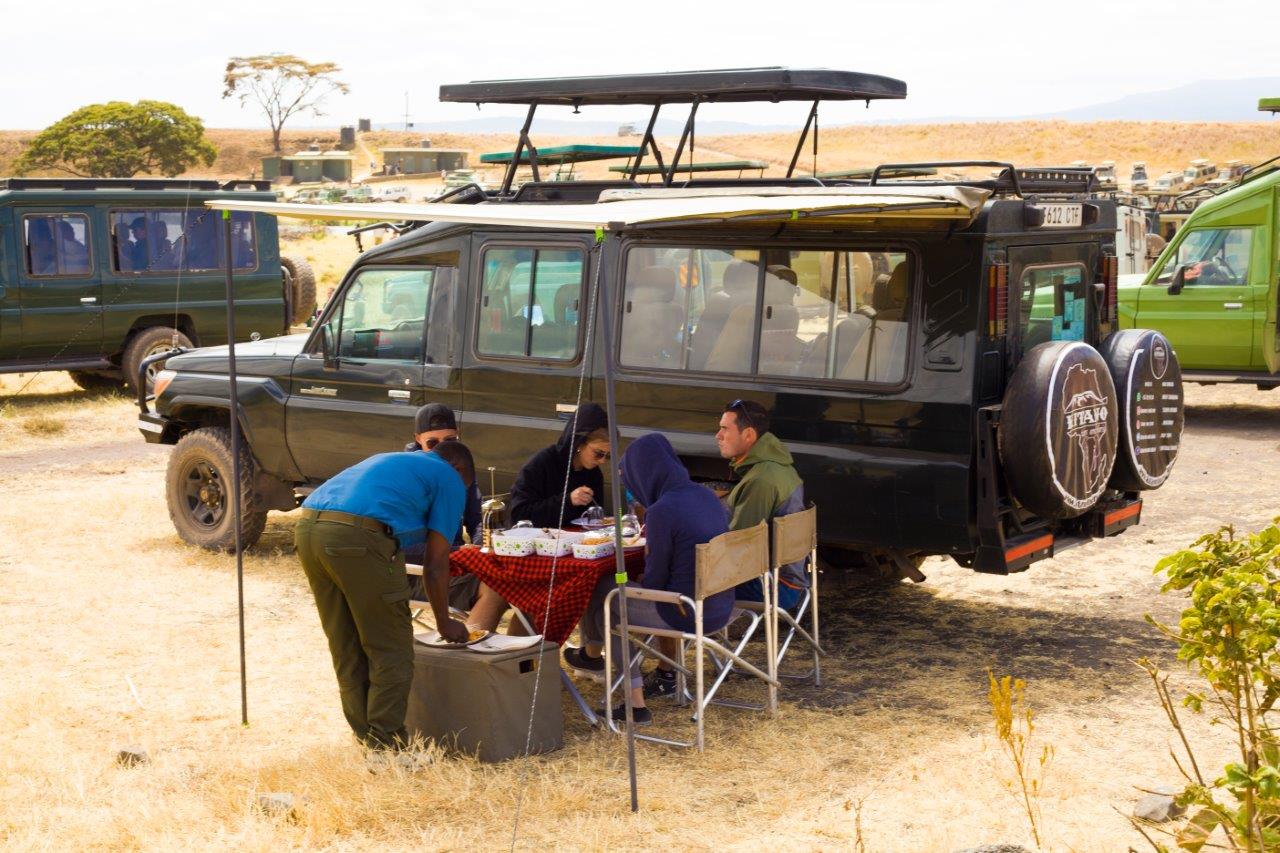
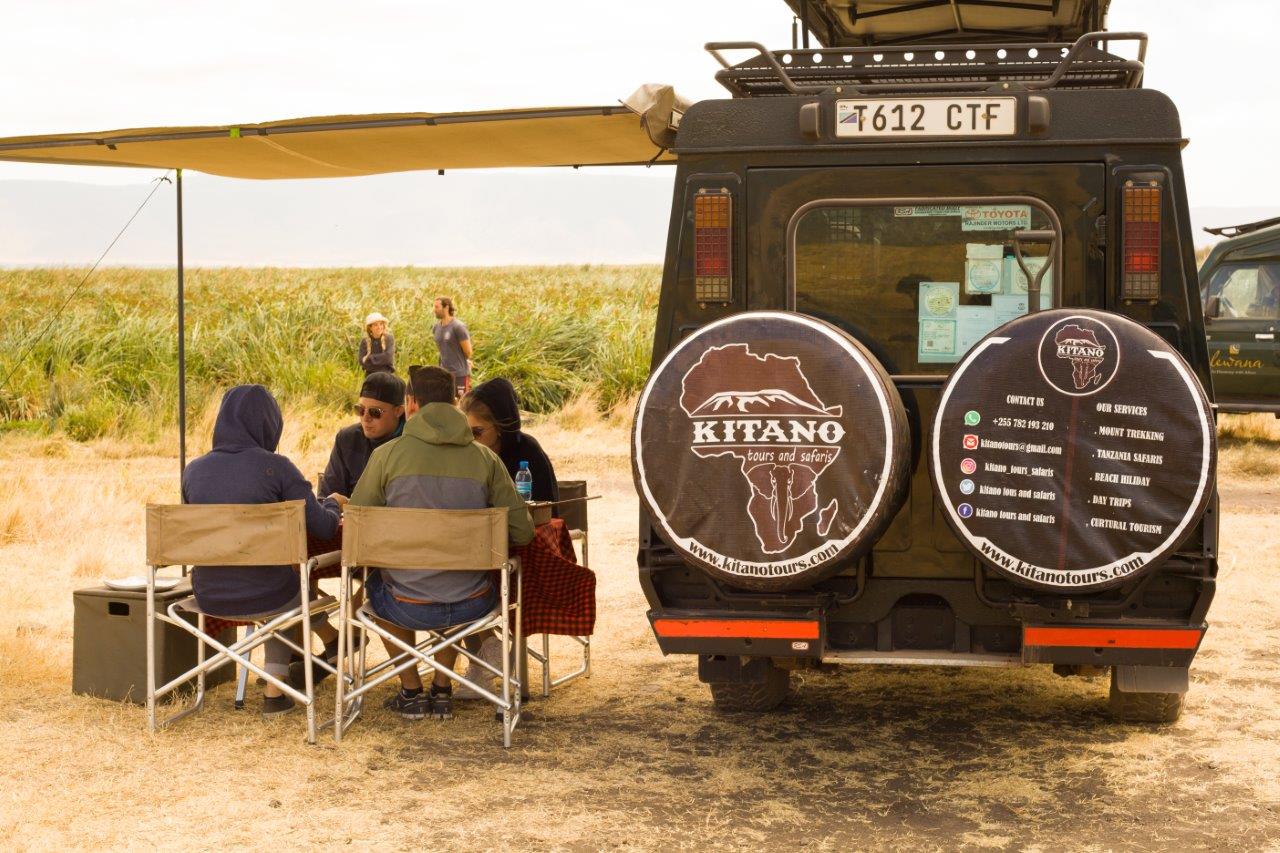
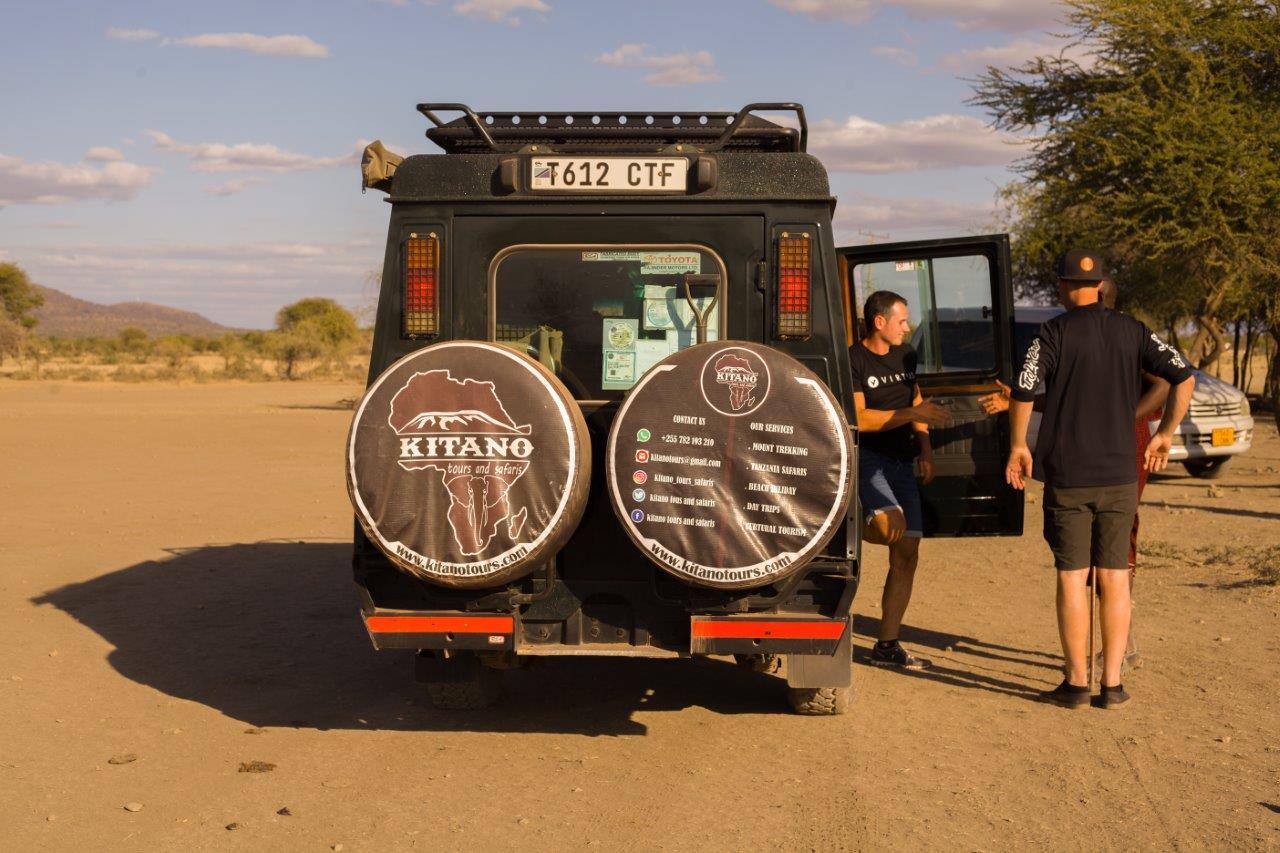
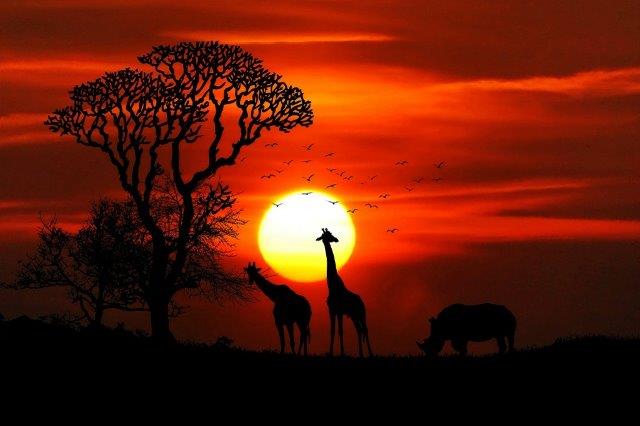
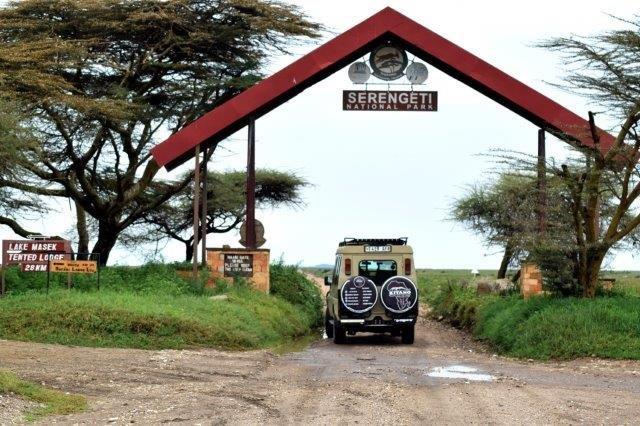
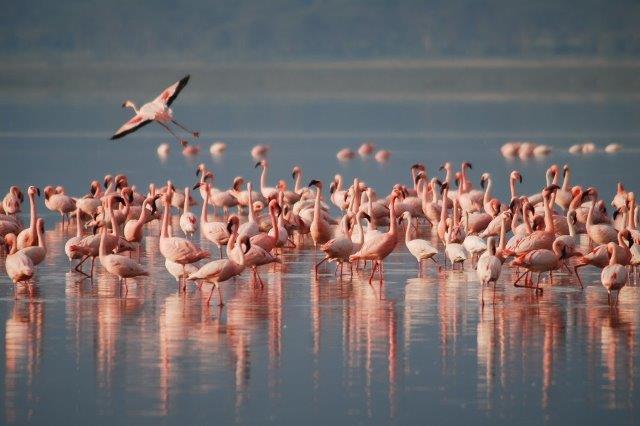
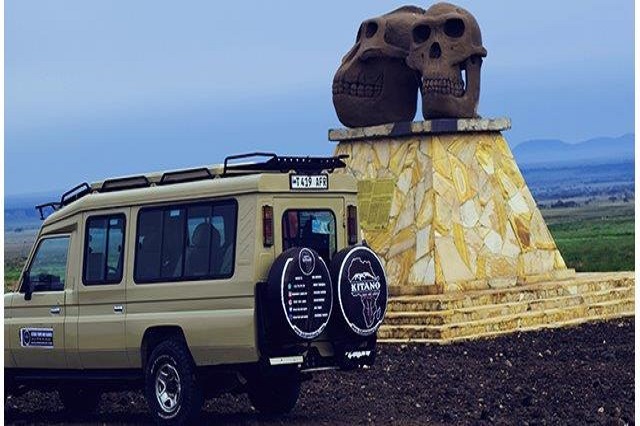
.jpg)
